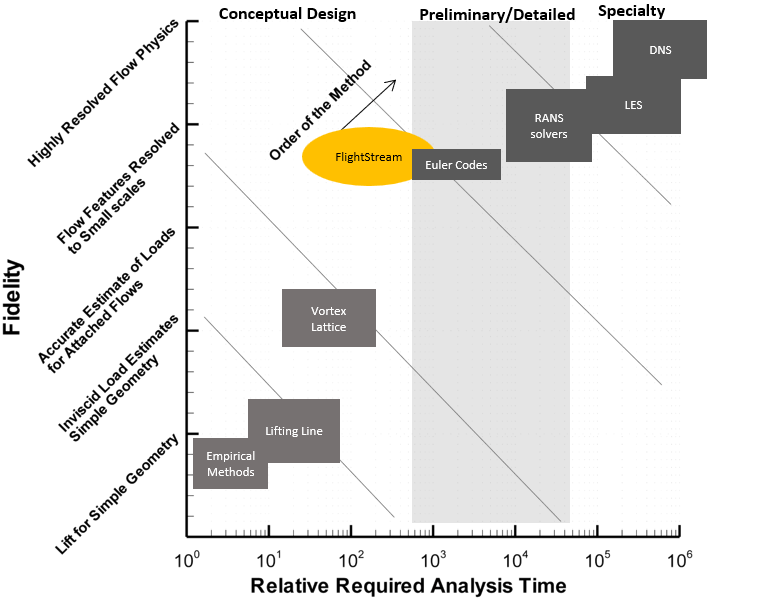Updated

While the realm of computational fluid dynamics (CFD) is vast and varied, the inception of FlightStream was driven by a distinct vision: to create a solver that is not only robust and reliable but also modern, accessible, and efficient for the aerospace community. Below are a list of common questions when talking about “Why FlightStream?”
The existing landscape of CFD is indeed broad, encompassing a range of solvers each with their unique capabilities and complexities. However, FlightStream was conceived to fill a specific niche that was underserved by conventional CFD tools. Its foundation lies in the desire to provide a user-friendly, yet powerful tool that bridges the gap between high-fidelity CFD simulations and the practical rapid-iteration needs of engineers and designers. Its streamlined user interface, coupled with the underlying robust aerodynamic solver, makes it an invaluable tool for rapid design iterations and in-depth aerodynamic studies.
Panel methods, the core of FlightStream’s solver, may seem like a technology from yesteryears, especially when juxtaposed with the more recent advancements in CFD. However, it’s essential to recognize that panel methods offer a unique blend of accuracy and computational efficiency, especially for external aerodynamic analyses.
FlightStream leverages the strengths of panel methods, enhancing them with modern computational techniques to provide a solver that’s not only fast but also capable of handling complex aerodynamic phenomena. The solver incorporates features like viscous effects, wake modeling, and advanced boundary conditions, making it a powerful tool despite its seemingly “outdated” foundation.
Moreover, FlightStream’s panel method solver is augmented with integral boundary layer modeling, enabling users to capture viscous effects with a level of detail that’s uncommon in traditional panel method applications. This integration facilitates a more comprehensive analysis of aerodynamic performance, providing insights that are crucial for design optimization.
FlightStream stands as a beacon of innovation in the aerospace industry, embodying the spirit of its founders. It’s a tool that respects the legacy of panel methods while pushing the boundaries of what’s possible with modern computational techniques. FlightStream isn’t just a response to the existing CFD tools; it’s a bold step forward, forging a new path for aerodynamic analysis and aircraft design.
Author: Daniel Enriquez & Vivek Ahuja